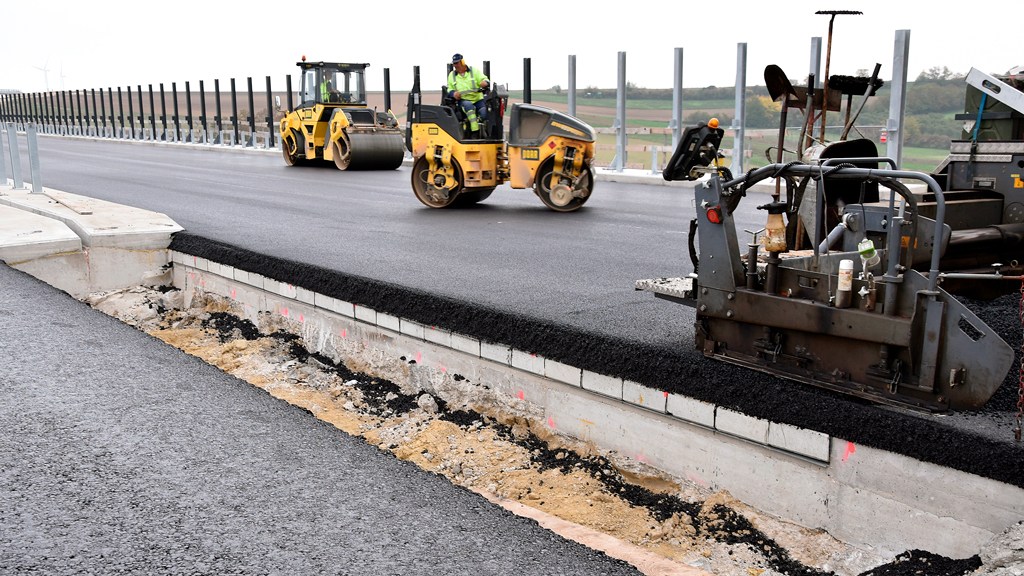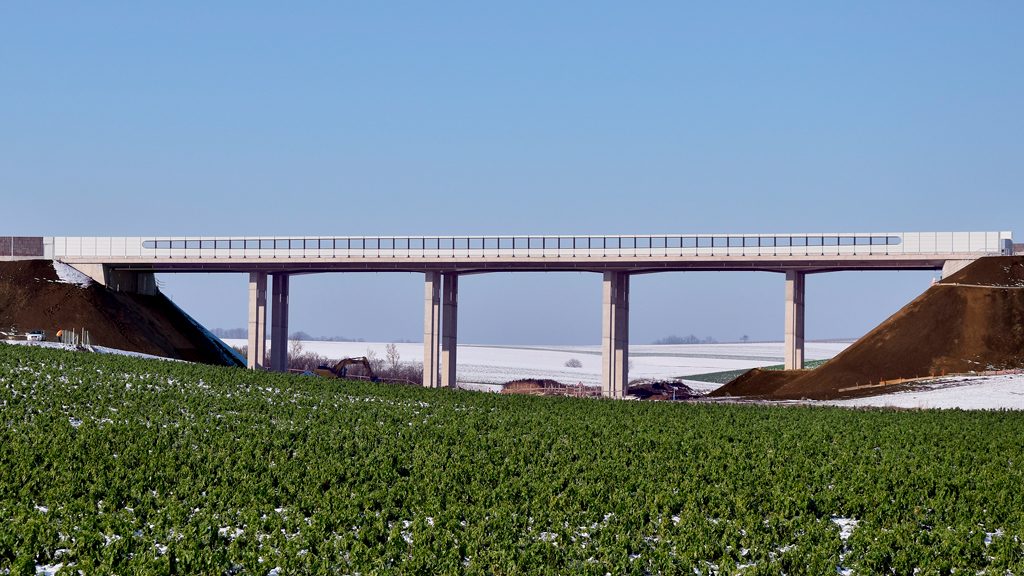Expansion joints are a fact of life whether you’re building a rail line, a building facade or a bridge.
Building materials expand in hot weather and contract when it turns cold.
Highway bridges of any great length have expansion joints at each end. Drivers are usually aware of them because there’s often a small bump as you cross them.
But a research team at the Vienna University of Technology (TU Wien) has developed a system that doesn’t use conventional expansion joints.
Instead, there is a transition zone at each end of the bridge that is a few metres long. The system has been patented and built and has passed its first winter of service on an Austrian autobahn with flying colours.
Johann Kollegger, of the Institute of Structural Engineering at the university, headed the team that designed these transition zones.
He says that conventional expansion joints are made up of several parts that can, to a degree, move freely against each other. But he considers them to be a weak point in modern bridge construction. That’s because they need constant maintenance, occasionally need to be replaced and can account for as much as 20 per cent of bridge maintenance costs.
And, he says, “that’s not taking into account economic losses caused by diversions, traffic jams and other disruptions.”
The system devised by Kollegger and his team doesn’t absorb deformations in the bridge deck just at each end of the bridge. Instead, they are distributed across a larger area.
The system uses 20 to 30 concrete elements arranged one after another and connected using cables made from a special glass fibre material. The structure can be likened to a chain of beads threaded on an elastic cord: If you pull on the cord the distance between all the beads increases evenly.

So when cold weather sets in and the bridge deck begins to contract, the concrete elements are pulled further and further apart.
Come spring the deck begins to heat up, becoming longer and compressing the distance between each of the concrete elements in the transition zones.
Kollegger says a bridge that is 100 metres long can differ in length by several centimetres between summer and winter.
He says especially in winter, when the concrete contracts, serious damage can occur in the deck’s asphalt overlay. There is less risk in the summer as the asphalt becomes more pliable at higher temperatures.
But he says it was crucial to have a suitable asphalt mix to cover the concrete elements. That was because millimetre-sized movements in the asphalt occur as the whole transition zone expands and contracts. The asphalt mix had to be flexible enough to withstand these movements without cracking.
That’s why Kollegger brought in a team headed by Ronald Blab, of the university’s Institute of Transportation.
Austria has a group that goes by the acronym ASFiNAG, which is a publicly owned corporation that plans, finances, builds, maintains and collects tolls for the entire Austrian autobahn system. The group had been in close contact with Kollegger and his team from the start of his project. That liaison meant there were no delays in getting the system built once it was ready.
The result was the construction of the 112-metre-long Satzengraben bridge as part of a motorway under construction in the northern part of Lower Austria.
Another result, since this was a pilot project, was the decision to install comprehensive monitoring of the performance, not only of the new transition zones at each end but the bridge as a whole.
Now that the coldest time of year in Austria is over the data have been analysed, and the results are positive.
Michael Kleiser, a bridge construction expert at ASFiNAG, says the design team’s theoretical calculations about the distribution of deformations across the individual concrete elements were confirmed by actual field measurements.
As a result, he says, there is now nothing stopping this new technology from being used in other bridge constructions.











At last – a potential solution which could eliminate the need to accommodate deck movement at fixed points on the bridge and the installation of Expansion joints, which in my experience of 40 years always leak and allow winter road salt to saturate the surrounding concrete causing Chloride induced corrosion damage to the rebar . As someone involved in repairing the damage caused by introducing joints on bridge decks I welcome this hybrid innovation in the Concrete and Asphalt and would like to see more detail on how this system actually distributes movement over the larger concrete deck area and within the asphalt. Long overdue. R.Humphreys
Can this be used in seismic loaded structures?
I live in Colorado Springs. I want to make the engineers in Colorado aware of this development. C-Dot and the City of Colorado Springs need this right now. We have extreme cold and warm summers.